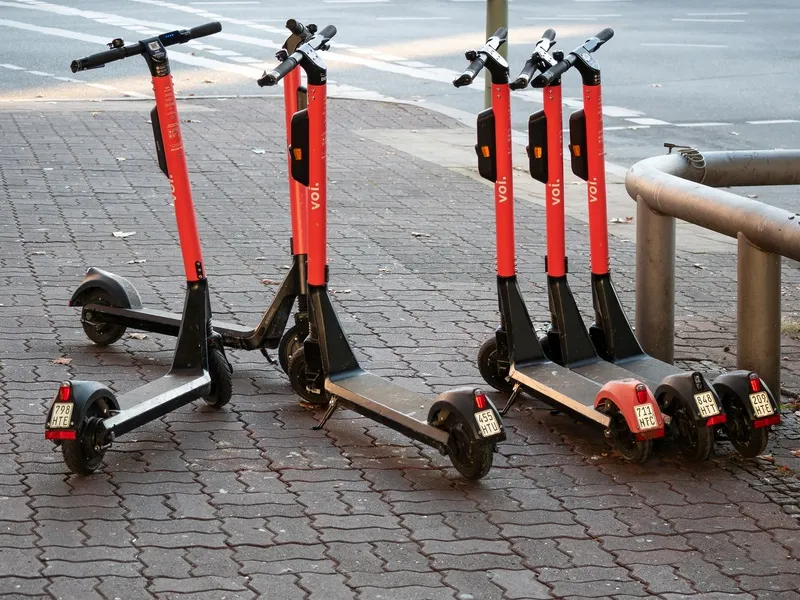Scottish transport minister Keith Brown has announced plans for a 50 mph heavy goods vehicle (HGV) pilot to be introduced at the same time as average speed cameras on Scotland’s A9 road.
The trial, which aims to improve the safety and operational performance the route, will go ahead next year alongside a safe driving campaign run by the haulage industry and the A9 Safety Group.
In advance of the pilot, the Road Haulage Association will step up their efforts to ensure lorry drivers adhere to safe drivi
December 6, 2013
Read time: 3 mins
Scottish transport minister Keith Brown has announced plans for a 50 mph heavy goods vehicle (HGV) pilot to be introduced at the same time as average speed cameras on Scotland’s A9 road.
The trial, which aims to improve the safety and operational performance the route, will go ahead next year alongside a safe driving campaign run by the haulage industry and the A9 Safety Group.
In advance of the pilot, the6985 Road Haulage Association will step up their efforts to ensure lorry drivers adhere to safe driving behaviours.
Announcing the trial, Brown said: “The A9 is one of Scotland’s most important links and this pilot is just one of the many engineering, enforcement and education measures being introduced to improve the safety and operation the route ahead of dualling.
“An extensive review of the available evidence has been undertaken in considering this pilot and we have also taken the views of A9 users, the business community and hauliers into account.
“It is clear that the average speed camera systems will bring safety improvements to the route and the pilot will bring operational benefits and may further improve driver behaviour by reducing frustration.
“The Road Haulage Association has long campaigned for this and they will work with their members to make sure they adhere to the most professional standards for the duration of the trial. They will be customising their training with regards to the A9 as well as implementing an education campaign.
“This pilot is dependent on the introduction of the average speed camera system and we be using several measures to judge its success, including before and after frustration surveys as well as monitoring changes in overtaking behaviour.”
RHA’s director for Scotland Phil Flanders said: “We have been working for this since the Scottish Parliament Freight Inquiry report was published recommending a trial. We will be doing all we can to ensure the pilot is a success and that it will benefit not just the freight industry but the whole of Scotland’s economy.”
The6983 Freight Transport Association (FTA) has also stated its support for the proposal. “FTA is in full support of the announcement by Keith Brown today of the 50mph trial on the A9”, said Malcolm Bingham FTA Head of Road Network Management Policy who has contributed to the A9 Safety Group on behalf of FTA members. “We welcome the opportunity of such a trial as we believe the current differential in speed limits between HGVs and other vehicles increase the road safety risk. This trial will provide some much needed evidence to help determine if there are any advantages, on safety grounds, to set the speed limit of an HGV to 50 mph.”
The trial, which aims to improve the safety and operational performance the route, will go ahead next year alongside a safe driving campaign run by the haulage industry and the A9 Safety Group.
In advance of the pilot, the
Announcing the trial, Brown said: “The A9 is one of Scotland’s most important links and this pilot is just one of the many engineering, enforcement and education measures being introduced to improve the safety and operation the route ahead of dualling.
“An extensive review of the available evidence has been undertaken in considering this pilot and we have also taken the views of A9 users, the business community and hauliers into account.
“It is clear that the average speed camera systems will bring safety improvements to the route and the pilot will bring operational benefits and may further improve driver behaviour by reducing frustration.
“The Road Haulage Association has long campaigned for this and they will work with their members to make sure they adhere to the most professional standards for the duration of the trial. They will be customising their training with regards to the A9 as well as implementing an education campaign.
“This pilot is dependent on the introduction of the average speed camera system and we be using several measures to judge its success, including before and after frustration surveys as well as monitoring changes in overtaking behaviour.”
RHA’s director for Scotland Phil Flanders said: “We have been working for this since the Scottish Parliament Freight Inquiry report was published recommending a trial. We will be doing all we can to ensure the pilot is a success and that it will benefit not just the freight industry but the whole of Scotland’s economy.”
The










